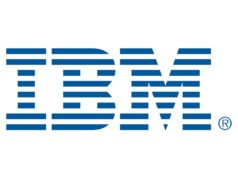The new 32GB DDR4 SoDIMM doubles capacity and increases speed to 2,666Mbps with the reduction in power consumption of up to 39 percent. Samsung announced that it has started mass producing the industry’s first 32-gigabyte (GB) double data rate 4 (DDR4) memory for gaming laptops.
The new SoDIMMs are based on 10-nanometer (nm)-class process technology that will allow users to enjoy enriched PC-grade computer games on the go, with significantly more capacity, higher speeds, and lower energy consumption.
Using the new memory solution, PC manufacturers can build faster top-of-the-line gaming-oriented laptops with longer battery life at capacities exceeding conventional mobile workstations, while maintaining existing PC configurations.
“Samsung’s 32GB DDR4 DRAM modules will deliver gaming experiences on laptops more powerful and immersive than ever before,” said Sewon Chun, senior vice president of memory marketing at Samsung Electronics. “We will continue to provide the most advanced DRAM portfolios with enhanced speed and capacity for all key market segments including premium laptops and desktops.”
Compared to Samsung’s 16GB SoDIMM based on 20nm-class 8-gigabit (Gb) DDR4, which was introduced in 2014, the new 32GB module doubles the capacity while being 11 percent faster and approximately 39 percent more energy efficient.
With a total of 16 of Samsung’s newest 16-gigabit (Gb) DDR4 DRAM chips (eight chips each mounted on the front and back), the 32GB SoDIMM allows gaming laptops to reach speeds up to 2,666 megabits-per-second (Mbps).
A 64GB laptop configured with two 32GB DDR4 modules consumes less than 4.6 watts (W) in active mode and less than 1.4W when idle. This reduces power usage by approximately 39 percent and over 25 percent, respectively, compared to today’s leading gaming-oriented laptops, which are equipped with 16GB modules.
Samsung has begun to aggressively expand its offering of the industry’s largest 10nm-class DRAM lineup (16Gb LPDDR4, 16Gb GDDR5, and 16Gb DDR4), which will usher in a new era of 16Gb DRAM in the mobile, graphics, PC and server segments, and subsequently in other markets such as supercomputers and automotive systems.






